THE DESCENT (2005)
A caving expedition goes horribly wrong, as the explorers become trapped and ultimately pursued by a strange breed of predators.

A caving expedition goes horribly wrong, as the explorers become trapped and ultimately pursued by a strange breed of predators.


Sometimes, a film comes along and surprises you. Not in the sense that you didn’t know it existed—though that can happen too—but rather when a film truly blindsides you with its unexpected brilliance. For me, The Descent falls into this category. I don’t recall watching the trailer, but I believe I’d heard film critic Mark Kermode’s glowing review at least a year beforehand. However, with the passage of time, I’d forgotten most of it. Then, one evening, I rented the DVD and braced myself for what I expected to be a fairly watchable, but ultimately forgettable horror movie. Oh boy, was I wrong! After the movie ended, I was left speechless by what I’d just witnessed. It took me some time to process it, but one thing was clear: The Descent is one of the best horror films ever made. I still believe that today.
At a lean 100 minutes, The Descent wastes no time introducing its main characters: three thrill-seeking friends—Sarah (Shauna Macdonald), Juno (Natalie Mendoza), and Beth (Alex Reid). During the opening credits, we see them tackling a whitewater rafting excursion with apparent ease and confidence. Sarah’s husband and daughter, Paul and Jessica, are waiting for her. They soon depart for the hotel to meet up with the others.
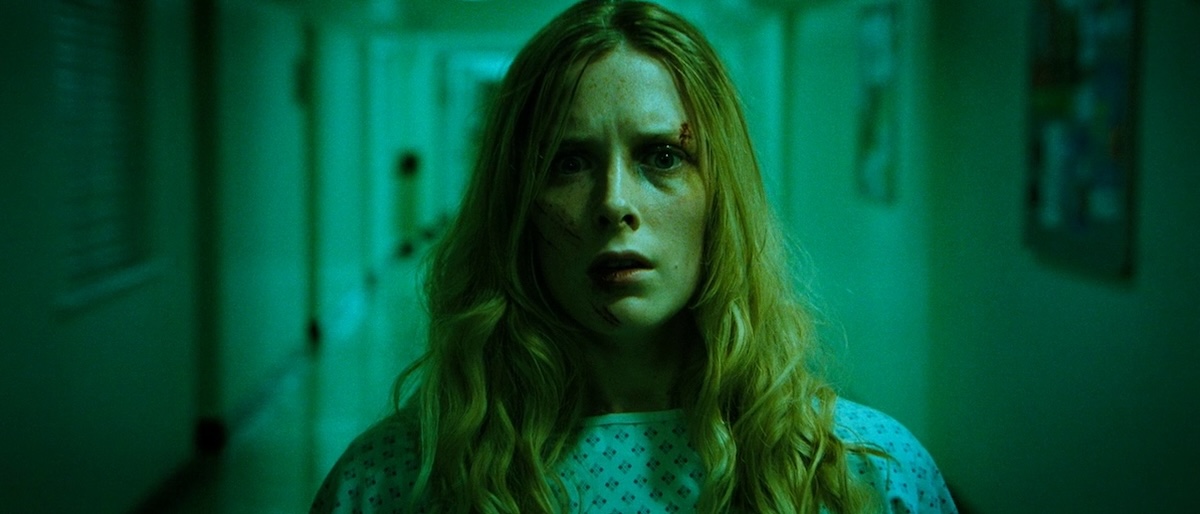
However, while driving, they suffer a terrible car accident which results in the death of Paul and Jessica. One year later, the group is in the Appalachian Mountains for a spelunking adventure. Joining them are sisters Sam (MyAnna Buring) and Rebecca (Saskia Mulder), and newcomer to the group, Holly (Nora-Jane Noone). The reunion’s purpose is for Sarah to reconnect with her friends and find some enjoyment after the traumatic past 12 months. Shortly after descending into the cave, they become trapped and realise they’re in the wrong system entirely—without a map. To make matters worse, they encounter a group of subterranean cave monsters intent on killing and eating them. Soon, the group are separated as they fight for survival while trying to find a way out of the cave.
Okay, I admit that, written down, the last part of this synopsis veers into daft B-movie schlock-nonsense territory. However, seeing the film unfold before your eyes, and within such a short space of time, you completely buy into the story and its characters. This is because the entire female cast is incredibly believable in their roles as long-term friends who find themselves in truly deep (pun intended!) trouble. Their chemistry, in fact, is off-the-charts realistic.
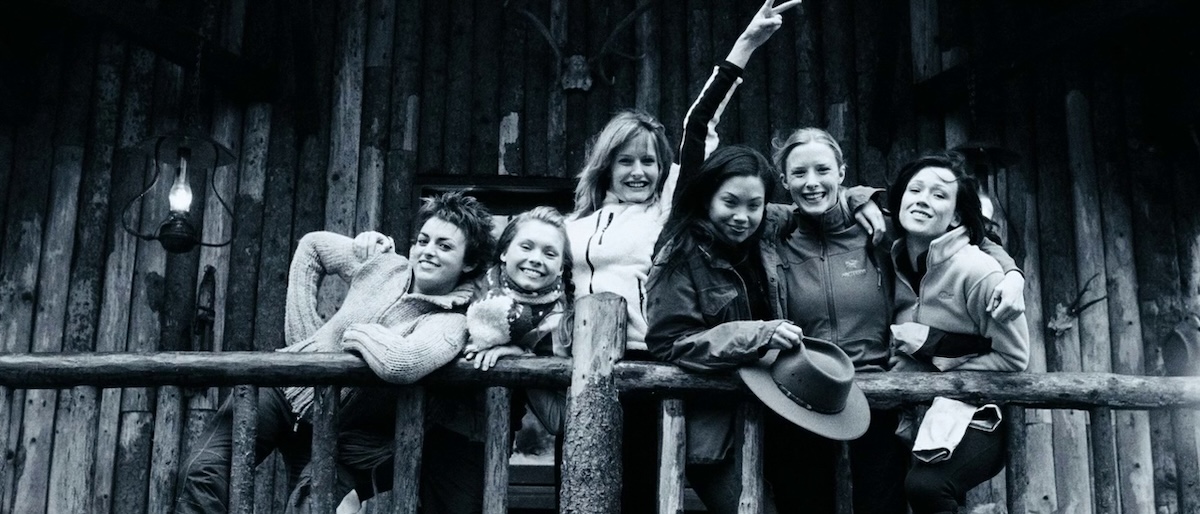
It’s challenging to pick a standout performance from such a talented ensemble, but Shauna Macdonald’s portrayal of Sarah probably takes the lead. Her character’s arc is incredibly compelling, and Macdonald executes it flawlessly in what must have been a demanding role.
Sarah’s journey is a harrowing one: she goes from a woman consumed by grief after losing her husband and daughter, to realising one of her closest friends has betrayed her. Then, she finds herself trapped in a cave, hunted by ferocious creatures. Eventually, she snaps, transforming into a fierce, feral version of herself. This pivotal transformation is marked by a sequence where she falls into a pool of blood, emerging completely covered in viscera. Marshall includes a neat visual homage to Apocalypse Now (1979) here: in the dim light, only her wide, open eyes are visible. From that point on, Sarah completely sheds any semblance of her former self. God forbid anything or anyone stands in her way!
Aside from the stellar acting talent, the strong screenplay by British writer-director Neil Marshall has to be attributed to the film’s success. To give you some examples of just how smart his screenplay is, very early on there’s a subtle hint at something inappropriate going on between Sarah’s husband and Juno. At the time, you barely notice this plot strand, or if you do, you can’t fathom out just how significant it is, which is why when this all follows through to its pay-off—some time later—the reveal, and the context in how it all plays out, is both surprising and really satisfying.
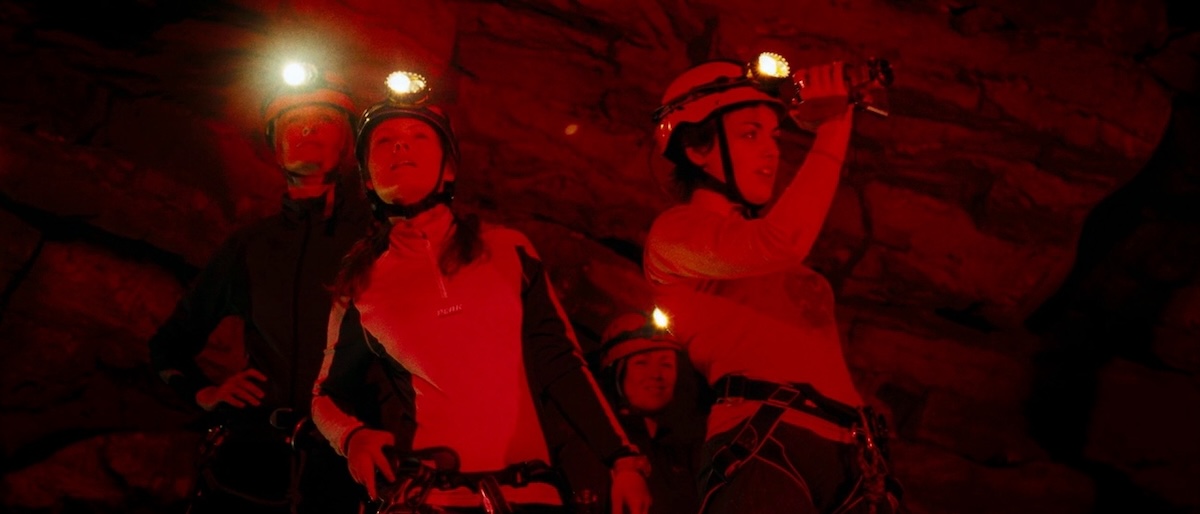
However, the most clever aspect of this whole production has to be down to the casting. Before cameras started rolling, the original plan was to have a mix of both male and female actors, but Marshall’s business partner had the genius realisation that it’s very rare for a horror movie to have the entire cast played by women. Not only that, the characters here are physically fit and sporty, making them stand out from the typical high school ‘girls in peril’ stereotype that can often be seen in movies in this genre. Another factor that comes from having an all-female cast is that it’s very interesting to see these tough women dealing with the situation, and what the different character dynamics are like throughout—and how this affects each relationship as a result. This is something that perhaps would not be explored so effectively had there been some male characters in the story.
After attending film school at Newcastle Polytechnic (now Northumbria University), Marshall began his career in the industry working as a freelance editor for eight years. Apparently, it was from watching Raiders of the Lost Ark (1981) at the tender age of 11 that gave him the inspiration to be a filmmaker. Prior to directing The Descent, Marshall’s previous film—his first feature—was Dog Soldiers (2002). This low budget movie involving a team of squaddies on a training exercise, who encounter a group of werewolves in the Scottish Highlands, proved to be something of a cult hit in the UK and America and led to Marshall being offered numerous requests to direct more horror movies. Despite Marshall’s initial reservations about being typecast as a horror director, he finally agreed to make The Descent, saying “they are very different films.”
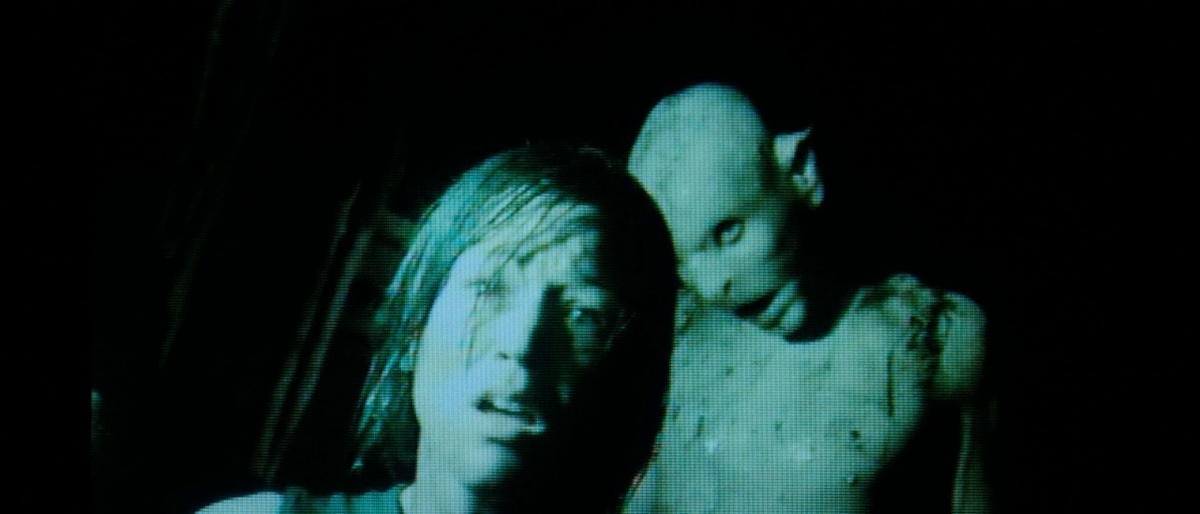
This statement from the director is completely spot-on. For while Dog Soldiers fits nicely into the horror genre, it’s full of humour that’s created from all of the banter exchanged between the group of laddish soldiers. Along with the laughs, there’s a great deal of weapon-driven action throughout; in fact, Marshall acknowledged that James Cameron’s Aliens (1986) was a key influence. In stark contrast, The Descent’s story is all about suspense and sheer terror; the filmmaker this time looking to The Texas Chain Saw Massacre (1974), and The Thing (1982), as examples of how to establish tension within the film’s narrative structure.
On the subject of tension, from almost frame one you can feel a sense of foreboding: through Marshall’s masterful direction and screenplay, audiences are never far away from thinking “what’s going to happen next?” And within the first 20 minutes, you know enough about the characters from just their conversations between each other: nothing feels contrived. A good example of this is in the scene when the group all meet up at the cabin following the year-long interim. While some general chit-chat is taking place, Beth comes out of her room dressed in matching floral pyjamas and everyone explodes into laughter. The way in which you see this all take place comes off as being so natural and real that, from this point on, you’re emotionally invested with pretty much all of the group, which, of course, makes the drama all the more effective when things start going south. Subsequently, such is the quality of the economic use of exposition, the film’s pacing doesn’t waste any time in getting to the scene when they’re descending into the cave.
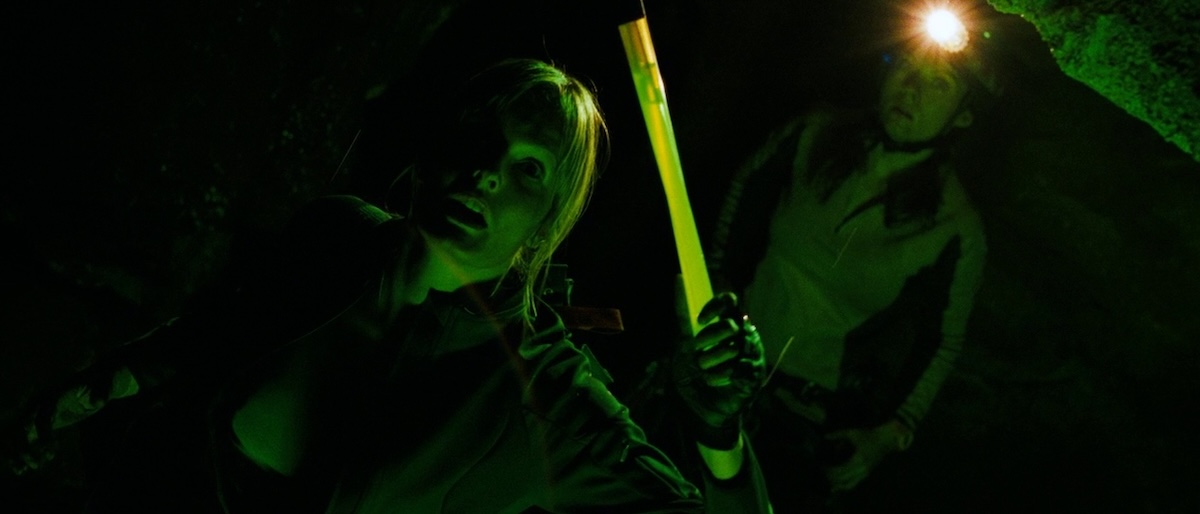
As much as this film so far’s been anything but boring, it now moves up a gear as we see the group begin their journey and head underground. Thanks to cinematographer Sam McCurdy and production designer Sam Bowles, the caves featured in the film look brilliantly real, when in fact it was all filmed on sets designed at Pinewood Studios. McCurdy’s expert use of lighting manages to utilise torchlight, green glow-sticks, red flares, and night-vision video camera to such a degree that you never lose sight of the actors as they navigate through their dark subterranean environment. Regarding the caves, due to the film’s low-budget, 21 separate sets were designed and built, then reused with different lighting, camera angles and set dressings to give the illusion of this vast cavernous interconnected cave system. The end result: with these technical tools employed so well, not once do you ever think that this is all taking place on a soundstage.
By the time the girls are pushing through the tunnels, you are already feeling stressed out from just the way they are moving into darker and tighter surroundings. Danny Sheehan’s sound design helps to stretch these moments of dread ever further; at times all you hear are the girls’ breathing, or water dripping from above. When Holly accidentally falls into a hole and breaks her leg, you don’t witness the actual drop, but you do hear the horrific bone-crunching sound as she first bounces off an outcrop before finally hitting the bottom.
David Julyan’s score adds an extra layer of drama, with his multi-layered string tones, ambient sounds, and orchestral elements combining to create an unnerving yet beautiful soundscape. Around the 50-minute mark, Marshall has already masterfully exploited the audience’s fears of dark, enclosed spaces. The film is proceeding nicely, lulling you into a false sense of security, when suddenly the terrifying cave creatures emerge. And yes, they are indeed very frightening.
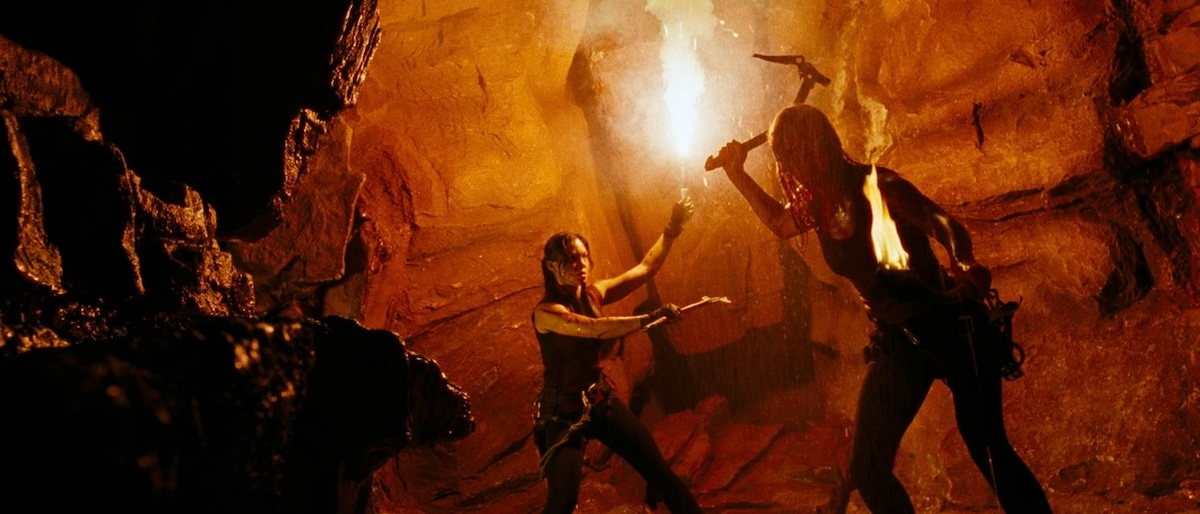
Paul Hyett, the makeup and prosthetics creator, designed the monsters, named “crawlers” during production. Once you see them, you truly can’t forget them. These finished creations are nothing short of hideous, resembling larger, Gollum-esque figures with pure white skin and no eyes. They don’t speak, but they do make a weird combination of high-pitched howls and clicks when communicating within their group.
Instead of using professional dancers, as is often the case for roles requiring specific movements, actors were chosen and filmed at 18 frames per second to create the crawlers’ strange, otherworldly presence. Marshall revealed that these creatures were never envisioned as aliens, but rather as cavemen who had evolved over thousands of years into a primal species perfectly adapted to a world of complete darkness.
To heighten the cast’s tension, the crawlers weren’t revealed to any of the actresses until their scenes together. Speaking of which, the group’s first encounter with them is shot in a way that stands as one of the best jump scares in recent years. If you haven’t seen it, I won’t spoil anything, but trust me, the build-up and reveal are terrifying.
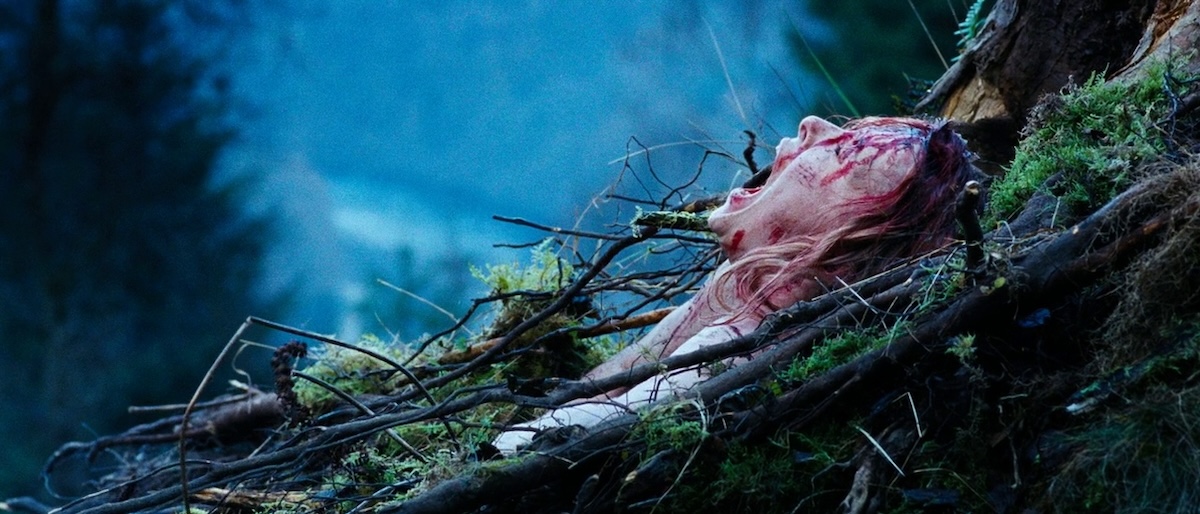
When The Descent was released back in 2005, it earned £2.6M in the UK. The film then went on to bring in a worldwide total of over $57M—which is very respectable considering its small £3.5M budget. Reviews were largely positive. Manohla Dargis of The New York Times described The Descent as “one of the better horror entertainments of the last few years”, while The Guardian’s Peter Bradshaw said the film “makes for a nastily violent thrill-ride heading straight down”. Viewing it again, my thoughts on the movie haven’t changed: it’s a masterclass in slow-building tension combined with cracking performances and more scares—and gore—than most horror films have in living memory.
Beyond the claustrophobia-induced thrills and seriously gnarly, bloody violence, the movie solidifies its quality status with a first-rate script. It powerfully explores themes of female friendship, betrayal, grief, and trauma, all of which are amplified to the max once the group plunges into the dark recesses of the cave’s tunnels. And that’s not even mentioning the ending(s)! If you’ve never seen it, seriously, what have you been doing with your life? Watch it as soon as humanly possible. To all the other Descent fans, you already know its greatness, but a rewatch is always a good idea—it never gets boring. In fact, it only improves with repeated viewings. Pure horror movie gold.
UK | 2005 | 100 MINUTES | 2:35.1 | COLOUR | ENGLISH • SWEDISH

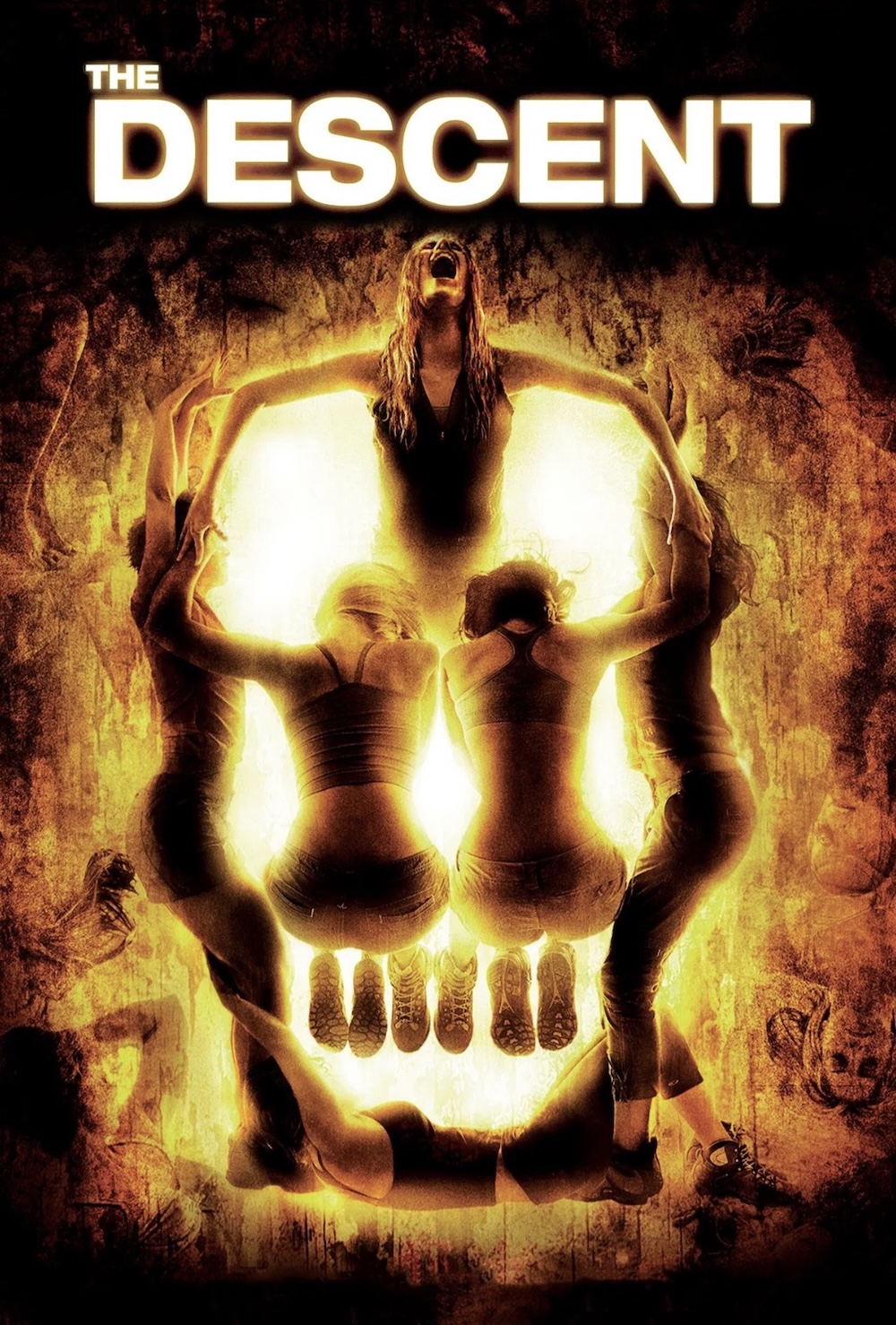
writer & director: Neil Marshall.
starring: Shauna Macdonald, Natalie Mendoza, Alex Reid, Saskia Mulder, Nora-Jane Noone & MyAnna Buring.
